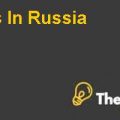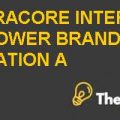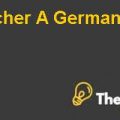
What international strategy (International, Global, Multi-domestic, and Transnational) does Heineken follow in the global beer market?
There are various strategies followed by companies to achieve global recognition. There are various strategies with respect to internationalization that include international, multinational, global, transnational and multi domestic strategies. All the term is different in their characteristics and treated different in the local and global market. Multinational companies are the ones that have investments and savings in other countries of the world. These companies focus on making adaptation according the products that has been offered by the market. On the other hand, global companies are the ones which do have worldwide operations and focus on standardization i.e. marketing and selling the same products with same advertising and promotion.
Conversely, transnational companies are the ones whose structure are more multifaceted. These companies are engaged in a strategy that have investments in foreign market and the decision making authority has not been given to the local market. The management of the company was well aware of the need for Heineken to use its brands to build upon its existing stature across global brands. In spite of its formidable presence in the markets around the world, the company has failed to match the recent moves by its competitors like Belgium’s InBev and U.k’s SABMiller that are going through major acquisitions and mergers through mega acquisitions.
Initially, Heineken was reluctant to make big acquisitions because of the dilution of family control, but later, the company has realized that in this way, the company will miss ample opportunities of growth.
Currently, the company is focusing on international and globalization strategy and focuses on making bigger mergers and acquisitions. In addition to that, the company is following a differentiation strategy that is based on offering various products and services in a distinguish way. Recently, a U.S seller asked some students who are studying marketing to strip the labels from the beer bottles from various brands. Among that, only Heineken bottles were recognized by the respondents that shows strong packaging of the company that is their extreme focus on differentiation.
In addition to that, the company has spent extensively on its flagship product that is premium light. The company has gone through with a process of cannibalization by making sales of new product by compromising sales of the original and old brew. The basic aim of launching a new product was a major step of changing company’s image in the global market. The management of the company has realized for an extensive need of enhancing brand awareness because it was mentioned in the case that the overall market share of the company was declining.
The company is also following transnational strategy that is selling products across several countries worldwide. In this strategy, the company makes differentiation in terms of promotion, but the formulation of a product remains the same. Beer and alcohol companies are the perfect example, following transnational strategies as they are not making changes in the formulation of the product and make changes in the other marketing mix.
What changes has Heineken made that will help it deal with its challenges, and effectively implement its international strategy?
Development in overall organizational structure:
The management of the company went through with some drastic changes during the past few years to make improvement in terms of profits and revenues. The basic change came when the company has appointed a CEO that was a non-family person. Even though, the majority of stakes and company shares are in the possession of family members but still, the new non-family CEO has a major place in the decision making of the company.
To counter the international competition, the company initiates a plan and named as “fit2fight” through which various several changes have been made. First and foremost objective of the plan was reducing hierarchy and making a flat organization. By making the overall management, streamlined, the company has reduced the board of executive team from five members to three members. The three members of the executive board include Chief Executive Officer, Chief Financial Officer and Chief Operating Officer.
The basic objective of doing this was to reduce the layers that are involved in the decision making process and makes the overall decision process inefficient. Another objective of the company was to attract the young individuals from all over the world to make its brand alive again in the market.
For that, the company has made several ads targeting young individuals consuming the company’s brands. Along with that, the company has also created various positions in the management that were accountable for five various operating areas along with nine various functional areas. By creating these positions the company was able to make management more clear about their level of responsibilities.....................................
This is just a sample partial case solution. Please place the order on the website to order your own originally done case solution.













